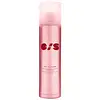What's inside
What's inside
 Key Ingredients
Key Ingredients

 Benefits
Benefits

 Concerns
Concerns

 Ingredients Side-by-side
Ingredients Side-by-side

Butane
Alcohol Denat.
AntimicrobialIsobutane
Diisopropyl Adipate
EmollientMagnesium Carbonate
AbsorbentAlcohol
AntimicrobialMethacryloyl Ethyl Betaine/Acrylates Copolymer
Water
Skin ConditioningParfum
MaskingHamamelis Virginiana Water
AstringentAloe Barbadensis Leaf Juice
Skin ConditioningPanthenol
Skin ConditioningCamellia Sinensis Leaf Extract
AntimicrobialTocopheryl Acetate
AntioxidantGlycerin
HumectantPhenoxyethanol
PreservativeCucumis Sativus Fruit Extract
EmollientBenzoic Acid
MaskingLimonene
PerfumingLinalool
PerfumingHexyl Cinnamal
PerfumingButane, Alcohol Denat., Isobutane, Diisopropyl Adipate, Magnesium Carbonate, Alcohol, Methacryloyl Ethyl Betaine/Acrylates Copolymer, Water, Parfum, Hamamelis Virginiana Water, Aloe Barbadensis Leaf Juice, Panthenol, Camellia Sinensis Leaf Extract, Tocopheryl Acetate, Glycerin, Phenoxyethanol, Cucumis Sativus Fruit Extract, Benzoic Acid, Limonene, Linalool, Hexyl Cinnamal
Water
Skin ConditioningButylene Glycol
HumectantPvp
Emulsion StabilisingDimethicone/Vinyl Dimethicone Crosspolymer
Skin ConditioningPhenoxyethanol
PreservativeCaprylyl Glycol
EmollientPPG-3 Benzyl Ether Myristate
EmollientPPG-26-Buteth-26
Skin ConditioningPEG-40 Hydrogenated Castor Oil
EmulsifyingPEG-10 Dimethicone
Skin ConditioningSilica
AbrasiveParfum
MaskingLimonene
PerfumingSodium Hydroxide
BufferingPentaerythrityl Tetra-Di-T-Butyl Hydroxyhydrocinnamate
AntioxidantTocopherol
AntioxidantWater, Butylene Glycol, Pvp, Dimethicone/Vinyl Dimethicone Crosspolymer, Phenoxyethanol, Caprylyl Glycol, PPG-3 Benzyl Ether Myristate, PPG-26-Buteth-26, PEG-40 Hydrogenated Castor Oil, PEG-10 Dimethicone, Silica, Parfum, Limonene, Sodium Hydroxide, Pentaerythrityl Tetra-Di-T-Butyl Hydroxyhydrocinnamate, Tocopherol
 Reviews
Reviews

Ingredients Explained
These ingredients are found in both products.
Ingredients higher up in an ingredient list are typically present in a larger amount.
Limonene is a fragrance that adds scent and taste to a formulation.
It's found in the peel oil of citrus fruits and other plants such as lavender and eucalyptus. The scent of limonene is generally described as "sweet citrus".
Limonene acts as an antioxidant, meaning it helps neutralize free radicals.
When exposed to air, oxidized limonene may sensitize the skin. Because of this, limonene is often avoided by people with sensitive skin.
The term 'fragrance' is not regulated in many countries. In many cases, it is up to the brand to define this term. For instance, many brands choose to label themselves as "fragrance-free" because they are not using synthetic fragrances. However, their products may still contain ingredients such as essential oils that are considered a fragrance.
Learn more about LimoneneParfum is a catch-all term for an ingredient or more that is used to give a scent to products.
Also called "fragrance", this ingredient can be a blend of hundreds of chemicals or plant oils. This means every product with "fragrance" or "parfum" in the ingredients list is a different mixture.
For instance, Habanolide is a proprietary trade name for a specific aroma chemical. When used as a fragrance ingredient in cosmetics, most aroma chemicals fall under the broad labeling category of “FRAGRANCE” or “PARFUM” according to EU and US regulations.
The term 'parfum' or 'fragrance' is not regulated in many countries. In many cases, it is up to the brand to define this term.
For instance, many brands choose to label themselves as "fragrance-free" because they are not using synthetic fragrances. However, their products may still contain ingredients such as essential oils that are considered a fragrance by INCI standards.
One example is Calendula flower extract. Calendula is an essential oil that still imparts a scent or 'fragrance'.
Depending on the blend, the ingredients in the mixture can cause allergies and sensitivities on the skin. Some ingredients that are known EU allergens include linalool and citronellol.
Parfum can also be used to mask or cover an unpleasant scent.
The bottom line is: not all fragrances/parfum/ingredients are created equally. If you are worried about fragrances, we recommend taking a closer look at an ingredient. And of course, we always recommend speaking with a professional.
Learn more about ParfumPhenoxyethanol is a preservative that has germicide, antimicrobial, and aromatic properties. Studies show that phenoxyethanol can prevent microbial growth. By itself, it has a scent that is similar to that of a rose.
It's often used in formulations along with Caprylyl Glycol to preserve the shelf life of products.
Water. It's the most common cosmetic ingredient of all. You'll usually see it at the top of ingredient lists, meaning that it makes up the largest part of the product.
So why is it so popular? Water most often acts as a solvent - this means that it helps dissolve other ingredients into the formulation.
You'll also recognize water as that liquid we all need to stay alive. If you see this, drink a glass of water. Stay hydrated!
Learn more about Water